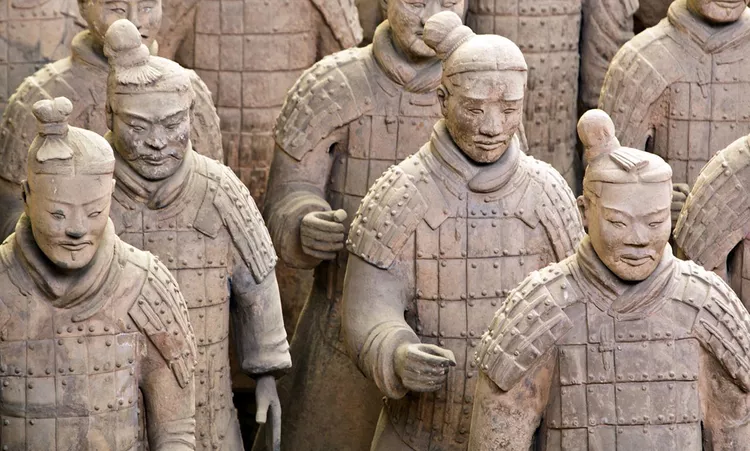Lintong District, Xi’An, Shaanxi, China, 710612
Phone: +86 29 8139 9001
Emperor Qin’s Army
It is often said that traveling to China without seeing the Terracotta Army is akin to visiting Egypt without witnessing the Pyramids. Experiencing Emperor Qin Shi Huang’s terracotta army, which stands vigil over his burial site and symbolizes his entry into the afterlife, is undeniably one of the highlights of any excursion to China. Designated as a UNESCO World Cultural Heritage Site in 1987, this site is a must-see.
Location
To visit the terracotta army, you will need to travel from Xi’an (pronounced She-ahn), the capital city of Shaanxi province. Xi’an is conveniently located to the southwest of Beijing, being just a one-hour flight or an overnight train ride away, making it an easy addition to your itinerary. Notably, Xi’an is recognized as China’s first historic capital, established by the first emperor, Qin Shi Huang.
The Qin Shi Huang Terracotta Warriors and Horses Museum is situated approximately thirty to forty-five minutes outside of Xi’an by car.
History
The terracotta army was discovered in 1974 by farmers digging a well, which unveiled a substantial burial pit connected to Emperor Qin Shi Huang’s tomb. This emperor was pivotal in unifying China under the first Qin Dynasty and initiated construction on the Great Wall.
Estimates suggest that the tomb took 38 years to complete, spanning from 247 BC to 208 BC, with over 700,000 conscripted laborers contributing to its construction. The emperor passed away in 210 BC.
Features
The museum is divided into three distinct sections, allowing visitors to observe the ongoing restoration of the terracotta army.
- Upon payment at the entrance, visitors can enjoy a 360-degree film detailing the site’s history and the army’s discovery.
- Following the film, you can explore the areas housing Pits 1-3, named sequentially based on their discovery. Pit 1 is the largest and has undergone significant restoration, showcasing columns of soldiers and war chariots, followed by Pits 2 and 3.
- Additionally, visitors will find numerous opportunities for shopping. If you missed out on acquiring a replica of the terracotta warriors in markets from Shanghai to Kashgar, this is your chance to buy them at their origin.
Getting There
- The majority of visitors opt for group or private tours. Group tours can be arranged through your hotel or organized from other cities, such as Beijing. While private tours may come at a higher cost, they offer the flexibility to take your time at the site.
- For independent travelers, Bus #306 from the parking area just east of Xi’an train station provides a straightforward route. Confirm directions with your hotel for convenience.
Essentials
- Opening hours: 8:00 AM to 6:00 PM
- Recommended visit duration: Three hours
- Guide options: If you prefer to explore independently, you can find English-speaking guides available outside the museum gates. Negotiate and finalize the price before agreeing on their services. Having a guide can enhance your experience by helping navigate crowds and identifying the best photo opportunities. However, visiting the museum without a guide is also very feasible.
Tips for Visiting
- Avoid purchasing your terracotta warrior replicas upon entry, as carrying them will be cumbersome. Instead, look for deals on your way out, as hawkers may offer great prices.
- Books discussing the history and discovery of the terracotta army are available in the museum’s bookstore. Often, a “farmer” from the original discovery is present for book signings, although he may not be one of the original discoverers.
- While some sources claim photography is prohibited, many visitors have successfully taken photos without issues; just remember to refrain from using the flash.





